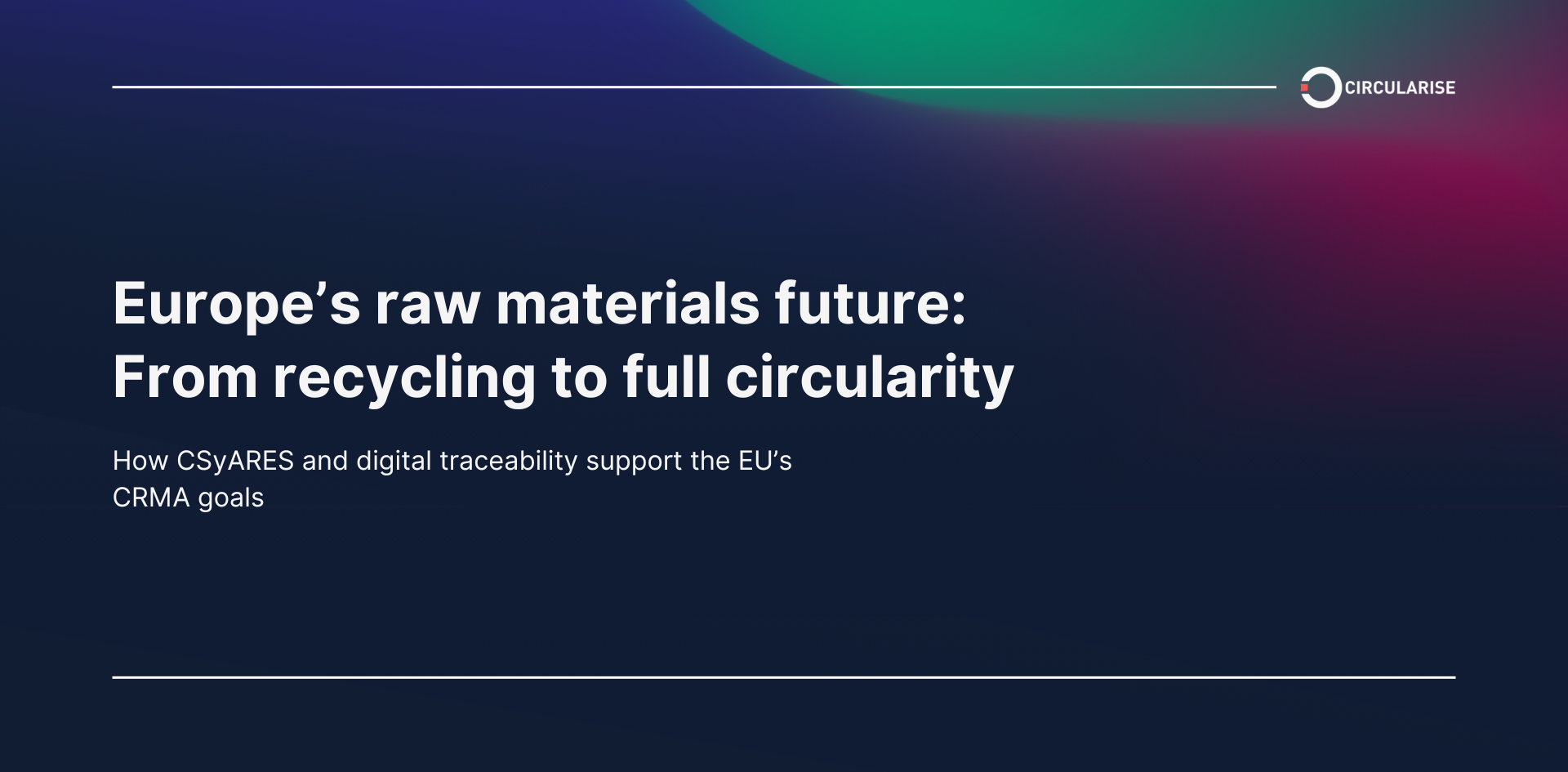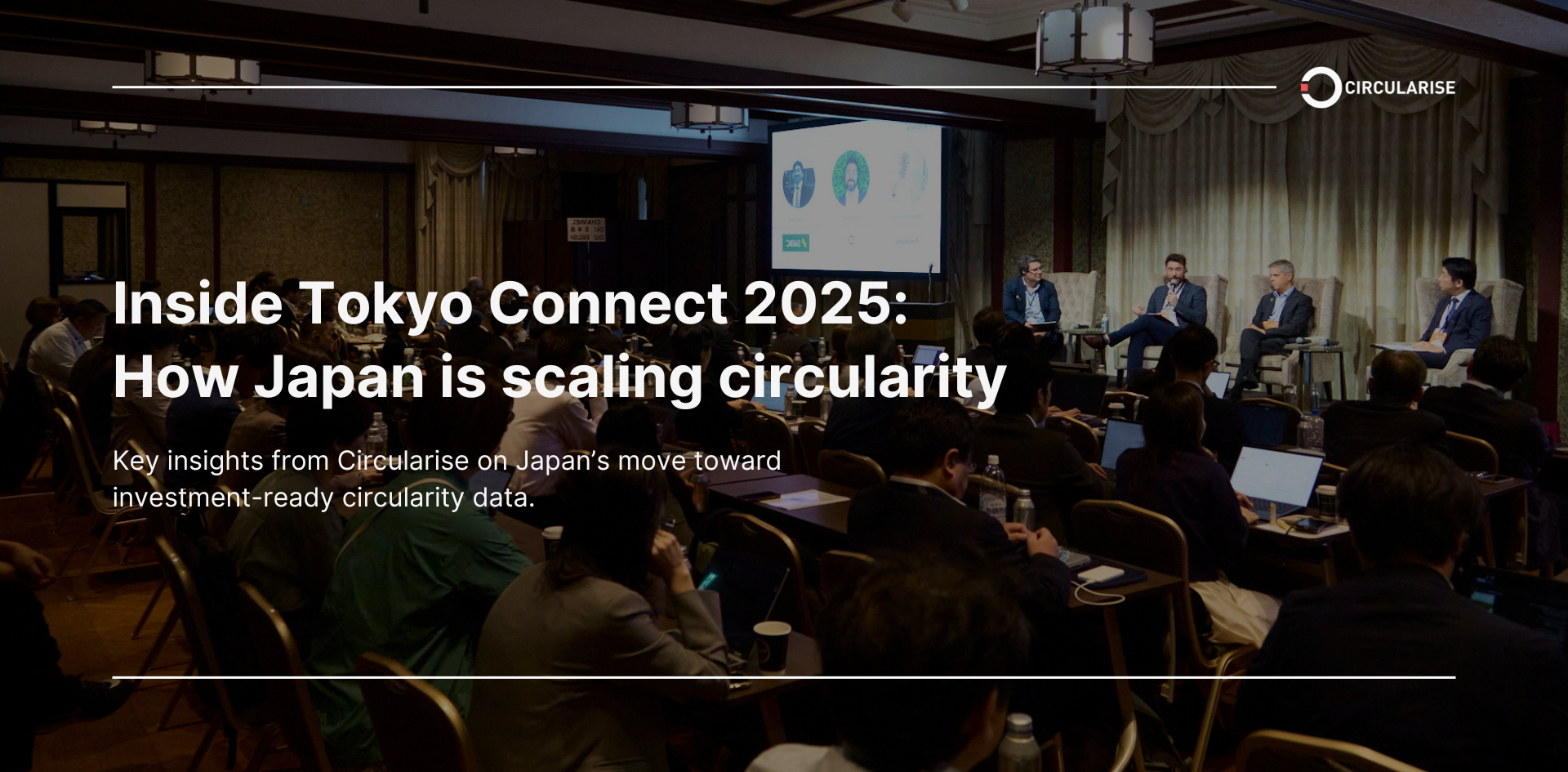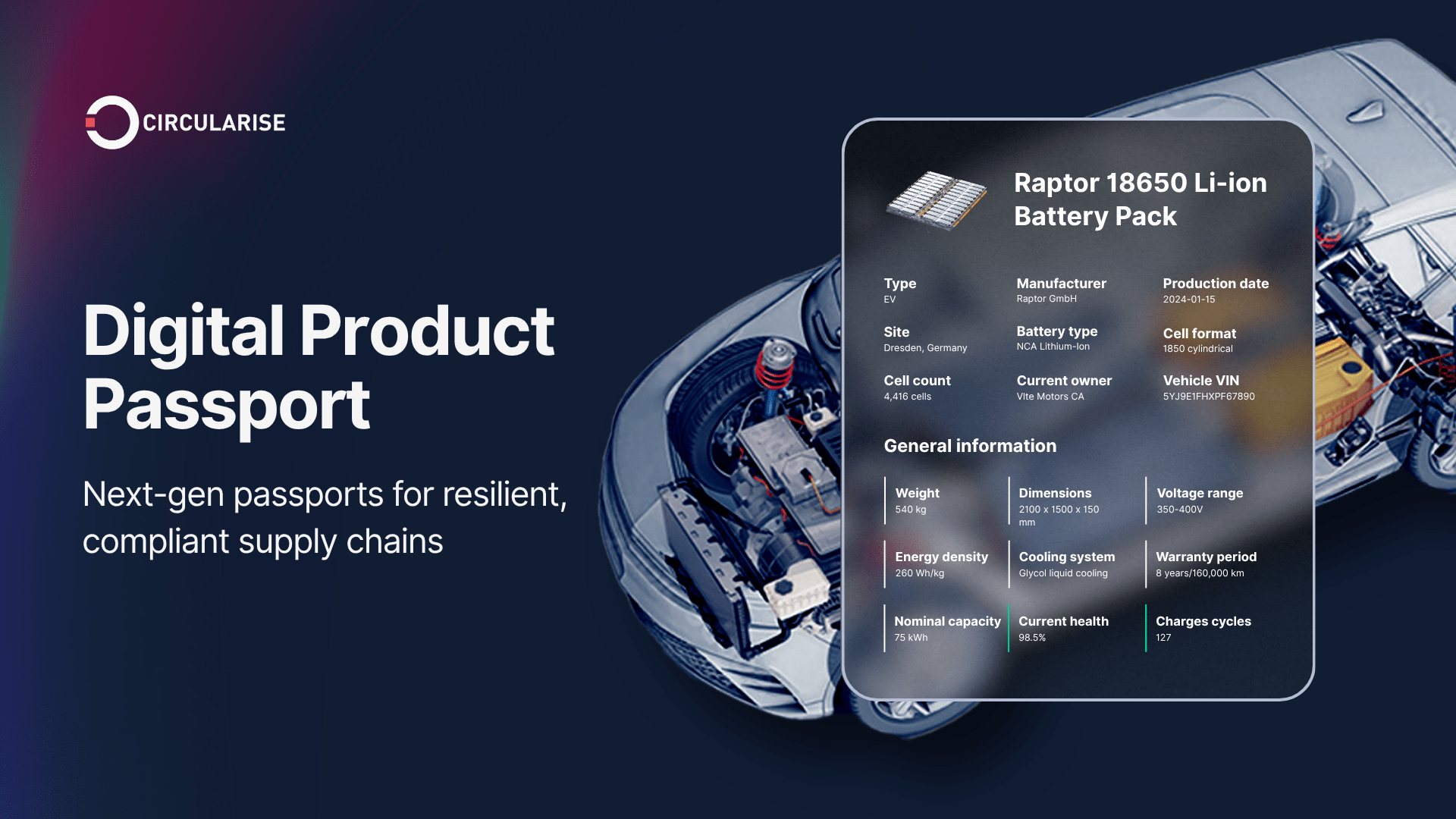Rare earth elements (REEs) are crucial in modern technological products such as smartphones, electric cars, and advanced military equipment. Countries with rich REEs deposits have become pivotal players in the industry and essential elements of international supply chains. However, the complex nature of the supply chain and the high degree of secrecy surrounding trade practices make it hard to track the origin and quality of REEs. This lack of transparency increases the risks of supply chain disruptions and makes it challenging to achieve sustainability goals within the industry.
This article explores the state of the rare earth (RE) industry, namely:
- The significance of REEs in the development and operation of modern and emerging technologies.
- The role and environmental impact of the extraction and production of REEs.
- The influence of regulations and certifications in the RE industry and how they can drive sustainability and transparency in REE supply chains.
- The strategies for improving supply chain resilience in the RE industry, including diversification of sources, the introduction of digital product passports, and the challenges faced in data exchange.
What are rare earth elements or metals used for?
Rare Earth Elements (REEs) consist of 17 elements that are fundamental to the advanced technology ubiquitously used in modern society and everyday life. These elements are a crucial ingredient in modern technologies, such as smartphones, electric vehicle motors, wind turbines, and advanced military equipment. They are also essential for emerging technologies like electric aircraft, solar panels, and 5G networks.

REEs are also frequently referred to as rare earth metals (REMs) in various contexts. However, considering that not all of these elements exhibit typical metallic properties, it is more precise to use the term "Rare Earth Elements".
Rare earth mining and production impacts
REEs are extracted through extensive open-pit mining, a process that not only consumes high amounts of energy, but can also lead to environmental issues such as water pollution and radioactive waste, and the disruption of ecosystems.
Already in 2010, China's State Council acknowledged that the nation's rare earth industry was inflicting "intense harm to the ecological environment, resulting in vegetation loss and contamination of surface water, groundwater, and agricultural land." The council attributed landslides and blocked rivers to the excessive mining of rare earth elements.1
As the environmental footprint of products becomes increasingly important, understanding and tracking the product's entire life cycle is crucial. This could reveal, for instance, whether the REEs in a product are legally sourced from mines with fair working conditions, among other things.

Unfortunately, this information is not appropriately documented or shared within REE value chains. This is due to the absence of traceability practices among stakeholders and privacy concerns that deter companies from disclosing sensitive data.
Rare earth elements industry outlook
The RE market is experiencing sustained growth, driven primarily by the escalating production of electric vehicles (EV), the growing clean energy sector, and the expanding construction industry.
Among the findings of our latest analysis:
- Accounting for approximately 30% of the rare earth market, there has been a spike in demand for magnets. This significant increase can largely be attributed to their increased use in a variety of electronic devices like speakers, headphones, sensors, wind turbines, hybrid and electric vehicles and glass fibers for communications. It is anticipated that the demand will soon outstrip the supply of rare earth metals (REMs) such as lanthanum and cerium.2
- The surge in the clean energy sector is largely propelled by the adoption of sustainable energy sources and efforts to reduce carbon emissions. According to a report by the International Energy Agency (IEA), renewable energy is projected to account for over 90% of the global electricity capacity expansion from 2022 to 2027.3 Within this realm of clean energy technologies, the demand for REEs is most pronounced in areas such as electric vehicles and battery storage, wind energy, and hydrogen. Moreover, the IEA identifies REEs from clean energy technologies as the ones set to experience higher growth between 2020 and 2040.4
- Wind energy, particularly offshore wind energy, is a significant driver of REMs demand due to the large-scale capacity expansion and higher mineral intensity. Essential metals for offshore wind turbines, like neodymium and dysprosium, provide lighter weight and higher efficiency, making them critical for optimising turbine performance. The market share of taller and larger turbines has risen from 10% in 2010 to 20% in 2020, and is expected to continue growing.4
- In 2022, Europe saw robust growth of approximately 15% in the sale of electric vehicles (EVs). This suggests that one in every five cars sold in Europe during that year was an EV. This upward trend is expected to persist, seeing alreadyincrease of 25% in the first quarter of 2023 compared to the same period in 2022. EVs and battery storage are expected to account for about half of the mineral demand growth from clean energy technologies over the next two decades.5 With the anticipated EV production boom, a corresponding rise in REE demand is expected. IDTechEx even forecasts an eleven-fold increase in neodymium volume demand for battery-electric vehicles by 2032.6

With the escalating demand for REEs, enhancing supply chain logistics becomes crucial to meet the needs of manufacturers and other downstream stakeholders.
China’s dominance in the rare earth market supply
Although abundant in the earth’s crust, mineable concentrations of REEs are less common, rendering the global supply chain particularly fragile. This vulnerability largely stems from a heavy dependence on a limited number of countries for production, including the United States, Australia, Malaysia, and most notably, China.7 As of today, China accounts for 63 percent of the world’s rare earth mining, 85 percent of rare earth processing, and 92 percent of rare earth magnet production.8
To put it in perspective, Germany and Italy are the primary sources of global crystalline silicon cell production, yet they contributed a mere 0.6% in 2021.9 This pattern extends beyond solar modules to processed materials like permanent magnet alloys, balsa wood, and polyethylene, as well as components such as NdFeB permanent magnets and blades.10
China’s current dominance over global RE production implies vulnerability along the supply chain. Any changes in policies or regulations within the country, or other geopolitical consequences, can significantly impact the entire supply chain. Since the early 2000s, China has strategically regulated its RE production and trade to remain a leader in the RE industry. This monopoly poses a considerable risk for stakeholders as evidenced by China’s past restrictions on sales to certain countries, like Japan in 2010 and 2011.8 Additionally, in light of growing environmental concerns, the Chinese government is expected to enforce stricter environmental regulations to incorporate environmental costs into RE production.11

Various countries have attempted to mitigate the risks associated with their dependence on China for REE by diversifying their supply chain. However, these efforts have faced obstacles, such as the high cost of mining and production – which demands significant investment in infrastructure – and the environmental repercussions of mining and processing REM. These factors have made it difficult for countries to establish independent supply chains successfully.
As the main REE supplier, China presents challenges in data exchange regarding processes, materials, and other critical supply chain information. This issue becomes increasingly significant as the need for supply chain transparency grows, so as to align with requirements set by the Ecodesign for Sustainable Products Regulation and the objectives of the Circular Economy Action Plan (CEAP).
Rare earth regulations and certifications
Regulations can drive industrial transformation by setting clear requirements and incentives for sustainable practices. Compliance by a few companies can create a domino effect, motivating other businesses to follow suit to remain competitive. This is particularly evident when customers demand environmental supply chain practices, or when industry norms and/or legal mandates drive environmental innovation.12
For companies to be able to secure their environmental certifications, they must be able to substantiate their sustainability claims. Initiatives such as the European Green Deal and the Paris Agreement aim to address climate change and other environmental concerns to improve the well-being and health of citizens and future generations.13 These initiatives towards sustainability goals are gradually shifting from voluntary to more obligatory approaches, prompting companies to require visibility throughout their supply chain.
The proposed Critical Raw Materials Act (CRM Act) serves as another response to the lack of secure and sustainable supply of critical raw materials within the EU. This regulation seeks to strengthen the European strategic raw materials value chain by establishing benchmarks for domestic extraction, processing, and recycling. It also aims to diversify imports, improve risk monitoring and mitigation, and ensure the free movement of goods while protecting the environment. Based on impact assessment, the regulation addresses challenges in secure and sustainable supply, offering policy options to boost resilience and sustainability.14
The certification systems, labels, and regulations seek to increase transparency, traceability, and environmental sustainability in the supply chain. Already, actors in the RE industry are starting to implement systems and tools to monitor REE production processes, verify authenticity, and ensure compliance with environmental and ethical standards.
However, there is still a long way to go in achieving transparency within supply chains. Tracking REE throughout the supply chain is currently challenging due to limited documentation of supply chain activities and the lack of standardised or integrated tracking systems. Different tracking systems, formats, and availability of data are used, making it difficult to compile a comprehensive and consistent view of the supply chain. Furthermore, the global nature of the RE market implies dealing with varying laws and regulations across different countries and regions.
Current strategies to enhance rare earth supply chain resilience
Since the RE supply chain is complex and vulnerable to market volatility and geopolitical uncertainties, it is essential to develop strategies to enhance its resilience. One of the key strategies is diversification, which involves identifying new sources of REE and reducing reliance on a few countries, notably China.
Some countries that have been investing in mining and processing facilities, and domestic production of RE are Australia, through Lynas Corporation, and Canada, via Ucore Rare Metals. Other programs and partnerships between the United States and the European Union also contribute to this effort.
To address this issue of secure and comprehensive data exchange, Digital Product Passports (DPPs) have been introduced to gather critical information about a product and its supply chain. The objective of the DPP is to facilitate the sharing of information across the entire value chain. This enables all stakeholders, including consumers, to gain a deeper understanding of the materials and products, as well as their environmental impact throughout their lifecycle. However, there are many barriers to acquiring and sharing this information.
The barriers to data exchange in the rare earth supply chain
The global nature of the rare earth industry often results in complex supply chains, making the tracing of material origins and journeys challenging. The RE market can also be volatile, leading to uncertainties in supply, pricing, and delivery timelines – which can further complicate the information gathering process.
In the RE industry, some of the challenges companies face when asking for information from their suppliers are:
- Transparency Issues: Many suppliers lack transparency about their sourcing and production methods, making it difficult for companies to verify the ethical and environmental standards of the materials.
- Differing regulatory compliance: Different countries have varying regulatory frameworks, adding complexity to compliance. For instance, Chinese laws differ significantly from Western ones, requiring extra effort to ensure alignment.
- Legal and geopolitical risks: The geopolitical climate can impact data sharing within the supply chain. Companies may face legal or political risks if they inadvertently violate new sanctions or trade restrictions. The geopolitical climate between the United States and China can also have an impact on data sharing within the supply chain.
- Data security concerns: Companies are cautious about sharing sensitive data with suppliers due to concerns over intellectual property theft or misuse. This is particularly notable in relations with Chinese suppliers due to perceived inadequacies in China's data security policies.
- Limited IT infrastructure: Suppliers, especially in developing regions, may lack reliable IT infrastructure, posing challenges in effective communication and the transfer of large amounts of data. This can result in delays and errors that could affect the entire supply chain.
- Language and cultural barriers: Language and cultural differences may give rise to misunderstandings around the importance of data sharing and its regulation, hindering effective collaboration.
All these challenges are barriers to establishing data-sharing systems. The difficulty of information acquisition demotivates companies from getting voluntary certifications or comply with regulations.
The future of the rare earth industry
The demand for rare earth elements has doubled over the past two decades, largely fueled by the shift towards clean energy. This surge poses environmental, ethical, and strategic challenges, and is expected to rise further as investments in renewable energy increase. This transition from traditional energy sources will undoubtedly bring significant challenges, making the need for traceability, especially in regions with less stringent regulations, increasingly important.
Addressing the challenge of ensuring traceability is a complex endeavour due to the diverse laws and regulations across countries and regions. It is crucial to devise strategies to maintain consistency in implementing traceability processes, even in less regulated jurisdictions, to minimise illegal or unethical practices. This calls for a collective response and active participation from governments, non-governmental organisations, and businesses in the RE industry.
In response to this, the Circular System for Assessing Rare Earth Sustainability (CSyARES) project was launched in 2022. This collaborative initiative involving the global Rare Earth Industry Association (REIA), BEC GmbH, Grundfos, Minviro, and Circularise,15 is focused on developing a blockchain-based traceability system to enhance transparency and sustainability in supply chains involving critical and rare earth materials. The project's overarching aim is to improve global raw material supply conditions, establish a standardised sustainability certification for REEs, and promote efficient data transfer between supply chain actors, paving the way for more sustainable solutions in the RE industry.

Circularise is the leading software platform that provides end-to-end traceability for complex industrial supply chains. We offer two traceability solutions: MassBalancer to automate mass balance bookkeeping and Digital Product Passports for end-to-end batch traceability.
Contact us to understand how our traceability solutions can help the transition towards more sustainable Rare Earth value chains.







